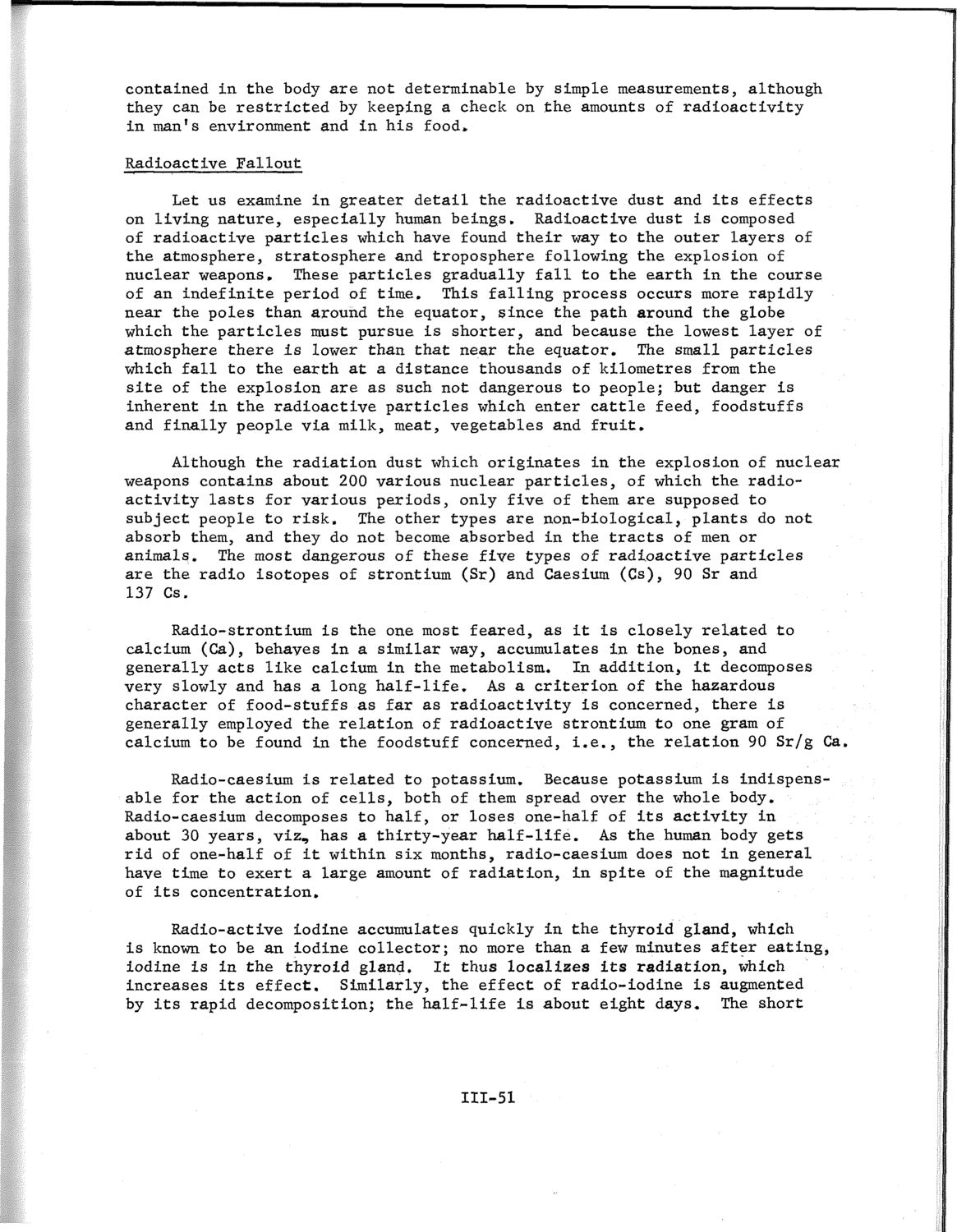| |
| |
Caption: SWE - Proceedings of the First International Conference of Women Engineers and Scientists
This is a reduced-resolution page image for fast online browsing.

EXTRACTED TEXT FROM PAGE:
contained in the body are not determinable by simple measurements, although they can be restricted by keeping a check on the amounts of radioactivity in man's environment and in his food. Radioactive Fallout Let us examine in greater detail the radioactive dust and its effects on living nature, especially human beings. Radioactive dust is composed of radioactive particles which have found their way to the outer layers of the atmosphere, stratosphere and troposphere following the explosion of nuclear weapons. These particles gradually fall to the earth in the course of an indefinite period of time. This falling process occurs more rapidly near the poles than around the equator, since the path around the globe which the particles must pursue is shorter, and because the lowest layer of atmosphere there is lower than that near the equator. The small particles which fall to the earth at a distance thousands of kilometres from the site of the explosion are as such not dangerous to people; but danger is inherent in the radioactive particles which enter cattle feed, foodstuffs and finally people via milk, meat, vegetables and fruit. Although the radiation dust which originates in the explosion of nuclear weapons contains about 200 various nuclear particles, of which the radioactivity lasts for various periods, only five of them are supposed to subject people to risk. The other types are non-biological, plants do not absorb them, and they do not become absorbed in the tracts of men or animals. The most dangerous of these five types of radioactive particles are the radio isotopes of strontium (Sr) and Caesium (Cs), 90 Sr and 137 Cs. Radio-strontium is the one most feared, as it is closely related to calcium (Ca), behaves in a similar way, accumulates in the bones, and generally acts like calcium in the metabolism. In addition, it decomposes very slowly and has a long half-life. As a criterion of the hazardous character of food-stuffs as far as radioactivity is concerned, there is generally employed the relation of radioactive strontium to one gram of calcium to be found in the foodstuff concerned, i.e., the relation 90 Sr/g Ca. Radio-caesium is related to potassium. Because potassium is indispensable for the action of cells, both of them spread over the whole body. Radio-caesium decomposes to half, or loses one-half of its activity in about 30 years, viz, has a thirty-year half-life. As the human body gets rid of one-half of it within six months, radio-caesium does not in general have time to exert a large amount of radiation, in spite of the magnitude of its concentration. Radio-active iodine accumulates quickly in the thyroid gland, which is known to be an iodine collector; no more than a few minutes after eating, iodine is in the thyroid gland. It thus localizes its radiation, which increases its effect. Similarly, the effect of radio-iodine is augmented by its rapid decomposition; the half-life is about eight days. The short 111-51
| |